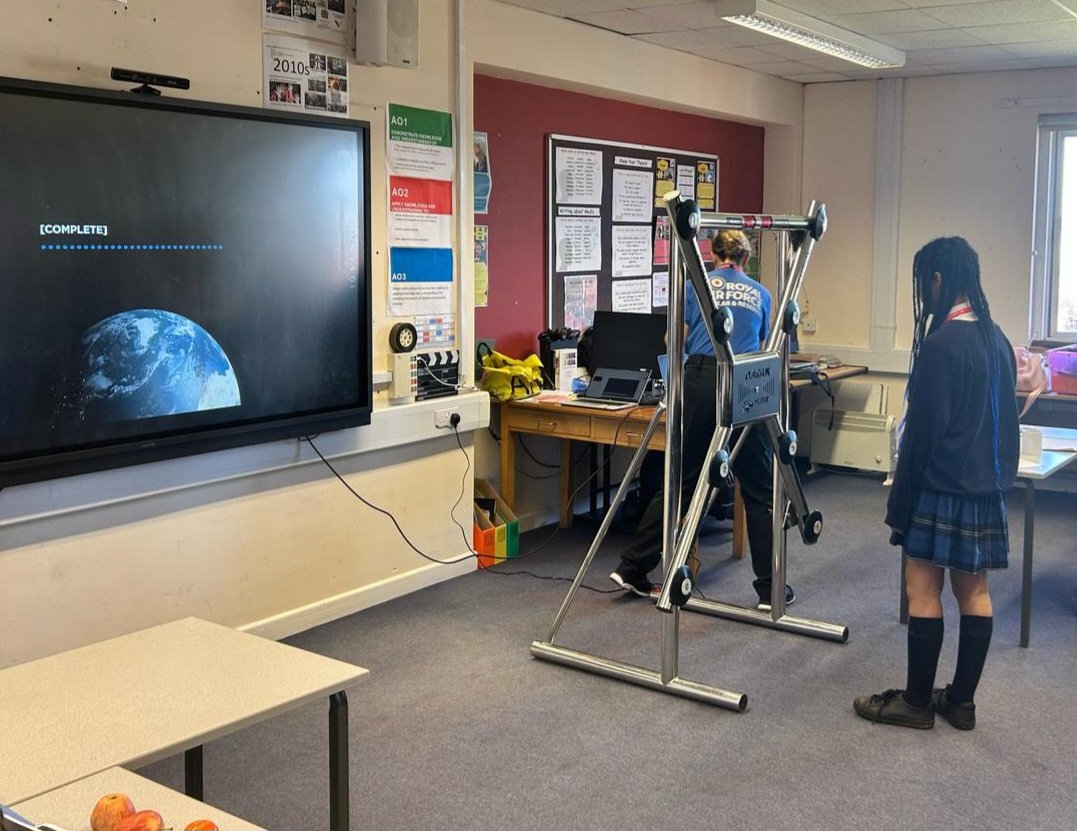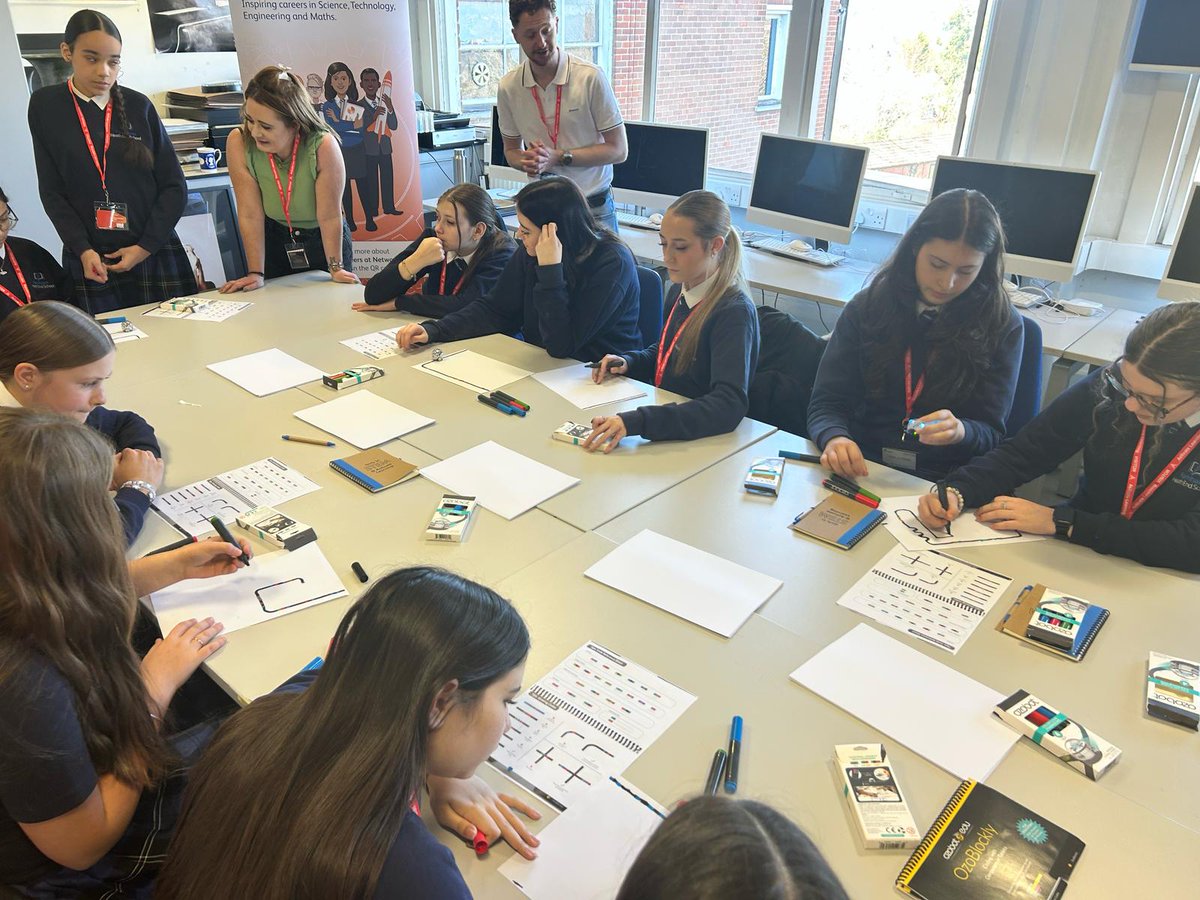 @TeamFHES - 17/04/2025#TeamFHES girls have returned from a fantastic netball tour in Paris, which included a trip to Disneyland. pic.twitter.com/KpoQTBLQyZ
@TeamFHES - 17/04/2025#TeamFHES girls have returned from a fantastic netball tour in Paris, which included a trip to Disneyland. pic.twitter.com/KpoQTBLQyZSubject Information - Science
VISION / AIM
Our vision is to inspire and engage students' learning and understanding of the world around us. To develop key ideas and skills of scientific knowledge, understanding, skills and curiosity in how science plays a role in the student’s past, present and future.
Our aim is to develop a deeper understanding of a range of scientific ideas in the subject disciplines of biology, chemistry and physics.
We run a range of extra curricular opportunities such as, the weekly Science club, STEM projects and a full programme of events for National Science Week. We also welcome guest speakers and events such as Birds of Prey, the Big Bugs show and the Chick hatching projects and we look forward to organising our science themed trips and excursions.
Resources and support materials can be found on Google Classroom.
Further information can be requested from Mrs D Birtwistle, Head of Department, dbirtwistle@fhes.org.uk
CURRICULUM OVERVIEW
|
CONNECTIONS - THEMES - THREAD ('Big Ideas') |
Year 7 |
Year 8 |
Year 9 |
Year 10 |
Year 11 |
|
Biology: What are living things and what are they made of? |
Movement. Cells |
Breathing & Respiration Digestion & Circulation |
Cell Biology Organisation |
Bioenergetics. Homeostasis & Response.
|
|
|
Biology: How do living things grow and reproduce? |
Reproduction in Plants & Human Reproduction |
|
Inheritance & Variation |
|
Inheritance, Variation and evolution. |
|
Biology: How do living things live together in their environments? |
Ecosystem - |
Photosynthesis
|
Ecology |
|
Ecology
|
|
Biology: Why are there similarities and differences between living things? |
|
Inheritance & Variation
|
|
|
Ecology
|
|
Biology: How do living things stay healthy? |
|
Health
|
Infection & Response |
B3 Infection & Response (continued) |
|
|
Chemistry: How do we explain how substances behave? |
Separating Mixtures |
|
C1 Atomic structure and the periodic table
C2 Structure and bonding. |
C6 Rates of reaction |
C6 Rates of reaction C7 Organic Chemistry C10 Using Earth's resources C8 Chemical Analysis |
|
Chemistry: What are things (materials?) made of? |
Particles |
Atoms , Elements & compounds |
C1 Atomic structure and the periodic table C2 Structure and bonding
|
C3 Quantitative Chemistry C6 Rates of reaction |
C6 Rates of reaction C7 Organic Chemistry C10 Using Earth's resources C8 Chemical Analysis
|
|
Chemistry: How can substances be made and changed? |
|
Patterns of reactivity
|
|
C4 Chemical Changes C5 Energy Changes |
C10 Using Resources |
|
Chemistry: How can we explain changes in the air, land and oceans? |
|
Environmental Chemistry |
C9 Earth's Atmosphere
|
|
C7 Organic Chemistry |
|
Physics: Why do materials have different properties? |
Energy
|
|
P3 Particle Model
|
P3 Particle Model P4 Atomic Structure
|
|
|
Physics: How do forces make things happen? |
Forces
|
Forces of Action & Motion
|
P1 Energy
|
P5 Forces
|
P5 Forces (continue)
|
|
Physics: How do we see, hear and communicate? |
|
Waves
|
|
|
P6 Waves
|
|
Physics: How do electricity and magnetism work? |
|
Electricity & Magnetism
|
P2 Electricity
|
|
P7 Magnetism & Electromagnetism
|
|
Physics: How does the Earth fit into the Universe? |
Forces Solar system and beyond |
|
|
|
P8 Space Physics (Sep)
|
|
|
Autumn Term |
Spring Term |
Summer Term |
|
Year 7 |
Cells Particles |
Energy Reproduction Atoms, elements & compounds |
Separating mixtures Acids & bases Digestion & Circulation Inheritance and health |
|
Year 8 |
Electricity & Magnetism Environmental Chemistry Chemical reactions |
Waves Respiration and gas exchange |
Ecology Photosynthesis Forces of Action & Motion Patterns of reactivity |
| Autumn Term | Spring Term | Summer Term | ||
|
Year 9 |
Biology |
Cell Biology. |
Organisation. |
Organisation. |
|
Chemistry |
Atomic structure and the periodic table. |
Bonding, structure, and the properties of matter. |
Chemistry of the atmosphere. |
|
|
Physics |
Energy. |
Energy. Electricity. |
Electricity. |
|
|
Year 10 |
Biology |
Infection and response. |
Bioenergetics. |
Homeostasis and response. |
|
Chemistry |
Quantitative chemistry. |
Chemical changes. |
Energy changes. |
|
|
Physics |
Particle model of matter and Atomic structure. |
Forces. |
Forces. |
|
|
Year 11 |
Biology |
Inheritance, variation and evolution. |
Ecology. |
Ecology. Revision. |
|
Chemistry |
The rate and extent of chemical change. |
Organic chemistry. Chemical analysis. |
Using resources. Revision. |
|
|
Physics |
Waves. |
Magnetism and electromagnetism. |
Space physics (Separate award only). Revision. |
KEY SKILLS
|
|
Year 7 |
Year 8 |
Year 9 |
Year 10 |
Year 11 |
|
Key Skills |
To be able to practise and embed the following skills:
|
To be able to develop, enhance and master key skills from Year 7, 8 and 9:
|
|||
|
Enquiry processes: working scientifically |
To be able to practise and embed the following scientific enquiry skills:
|
To be able to develop, enhance and master key scientific enquiry skills from Year 7, 8 and 9:
|
|||
GCSE SCIENCE EXAM BOARD
|
Exam Board |
AQA Separate Science Award |
||
|
|
Biology |
Chemistry |
Physics |
|
Paper 1 |
Cell biology; Organisation; Infection and response; and Bioenergetics. |
Atomic structure and the periodic table; Bonding, structure, and the properties of matter; Quantitative chemistry, Chemical changes; and Energy changes. |
Energy; Electricity; Particle model of matter; and Atomic structure. |
|
Paper 2 |
Homeostasis and response; Inheritance, variation and evolution; and Ecology. |
The rate and extent of chemical change; Organic chemistry; Chemical analysis, Chemistry of the atmosphere; and Using resources. |
Forces; Waves; Magnetism and electromagnetism; and Space physics. |
|
Link to the Specification |
Separate Biology award: https://filestore.aqa.org.uk/resources/biology/specifications/AQA-8461-SP-2016.PDF Separate Chemistry award: https://filestore.aqa.org.uk/resources/chemistry/specifications/AQA-8462-SP-2016.PDF Separate Physics award: https://filestore.aqa.org.uk/resources/physics/specifications/AQA-8463-SP-2016.PDF |
||
|
Exam Board |
AQA Combined Trilogy Science award |
||
|
|
Combined Trilogy Biology |
Combined Trilogy Chemistry |
Combined Trilogy Physics |
|
Paper 1 |
Cell Biology; Organisation; Infection and response; and Bioenergetics. |
Atomic structure and the periodic table; Bonding, structure, and the properties of matter; Quantitative chemistry; Chemical changes; and Energy changes. |
Energy; Electricity; Particle model of matter; and Atomic structure. |
|
Paper 2 |
Homeostasis and response; Inheritance, variation and evolution; and Ecology. |
The rate and extent of chemical change; Organic chemistry; Chemical analysis; Chemistry of the atmosphere; and Using resources. |
Forces; Waves; and Magnetism and electromagnetism. |
|
Link to the Specification |
GCSE Combined Trilogy Science award : https://filestore.aqa.org.uk/resources/science/specifications/AQA-8464-SP-2016.PDF |
||













